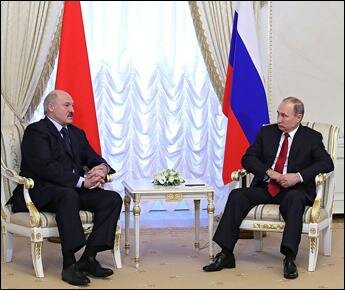Four suspects in riot case released
Four opposition activists who were arrested in March on suspicion of attempting to organize a riot were freed on April 1.

Dzmitry Kramyanetski, Raman Vasilyew, Artsyom Lewchanka and Uladzimir Yaromenak - all members of an opposition group called Malady Front (Young Front) - were released from the pretrial detention center on Valadarskaha Street in Minsk.
Messrs. Yaromenak and Lewchanka said that they had been released on their own recognizance and still had the status of suspect in the riot case. According to Mr. Vasilyew, he signed no papers on restrictions on his movement before his release.
Meanwhile, there were unconfirmed reports that at least 10 people had been formally charged with training and preparing people for a riot under Part Three of the Criminal Code’s Article 293. They included Miraslaw Lazowski, a leader of Bely Lehiyon (White Legion), a now-defunct nationalist organization, Alyaksey Abramaw, Andrey Belyawski, Ales Yawdakha, Ivan Kavalchuk, Syarhey Strybulski, Syarhey Palchewski, Yawhen Paltarzhytski, Uladzimir Rumyantsaw, and Malady Front leader Zmitser Dashkevich.
Suspects in the riot case started to be arrested after Alyaksandr Lukashenka revealed on March 21 that in the past few hours “we have apprehended a couple of dozens of militants who were preparing an armed provocation.”
Three days later the Belarusian leader said that those arrested on suspicion of training and preparing for a riot had dug holes in forests “like partisans” to hide “weapons, iron bars, axes, knives, grenades and other things,” and pretended to teach children patriotism.
“But there is a certain line that no one must cross in violation of the law and the constitution,” Mr. Lukashenka said. “If the government disregards this, then there will be a chain reaction and it will be very difficult to stop it because millions of people will be involved.”
Mr. Lukashenka noted that authorities had acted in response to a report from a Belarusian-born woman residing in a Western country, who he said warned that an armed provocation was being prepared.
“I ordered appropriate agencies to immediately start an operation to investigate these people and we discovered a whole arsenal of weapons as a result,” he said.
State media outlets reported last week with reference to a KGB source that the KGB had conducted 29 searches of the homes of suspects, seizing a Kalashnikov assault rifle, three carbines, two pistols, rounds of ammunition, hand grenades, clubs and telescopic truncheons, knives, axes, components and substances for making explosive devices, military uniform, bulletproof vests, helmets, NATO military first-aid kits, urban combat manuals and flags and various items bearing the emblems of volunteer military units fighting in eastern Ukraine.
The arrested Bely Lehiyon members are in fact “professionally trained militants aged 25 to 43” who planned to use the seized weapons during a protest scheduled to be held in Minsk on March 25, the KGB source was quoted as saying.
Miraslaw Lazowski and other Bely Lehiyon leaders allegedly planned to involve Malady Front activists led by Zmitser Dashkevich and “militants” who were expected to arrive from Ukraine, including members of UNA-UNSO, with which Bely Lehiyon had allegedly closely cooperated since the 1990s.
In addition, “extremist-minded” young foreigners were expected to take part in “actions in support of the organizers of the upcoming protest.”
The state STV television channel showed an unnamed young man described as an arrested Bely Lehiyon activist who said on camera that they “practiced moving in groups under combat conditions.”
“There were plans to study urban combat tactics because there was a report that pro-Russian forces might attack the procession of demonstrators and injure people,” the man said. “We were told to be ready to repulse the attack.”
The man allegedly led KGB officers to a Bely Lehiyon cache near the village of Tserabeynaye in the Stowbtsy district, Minsk region, in which “iron bars wrapped in sackcloth, two 100-liters containers with iron bars in them, and six F-1 and RGD-5 grenades with fuses” were discovered.





Disqus?